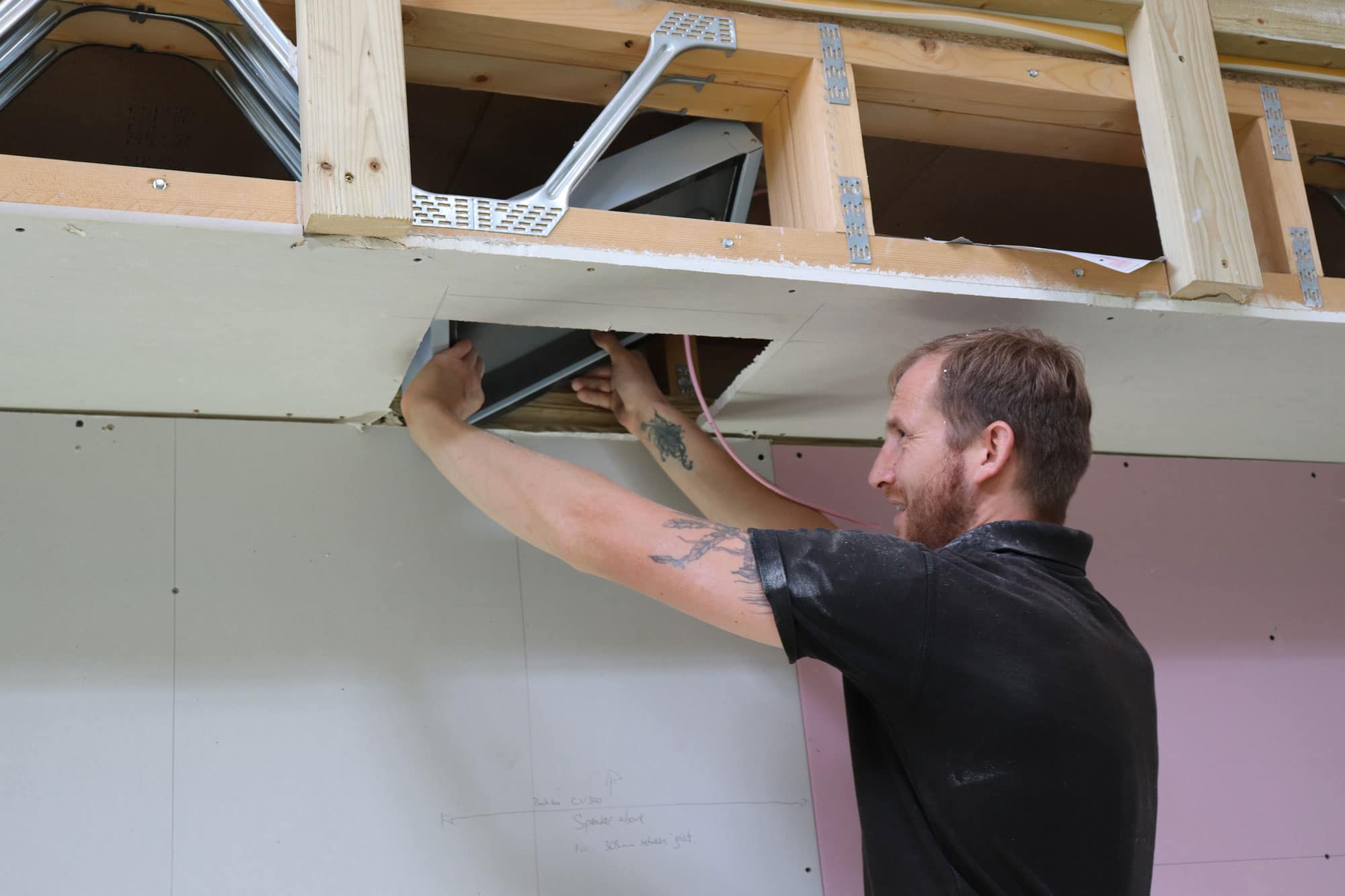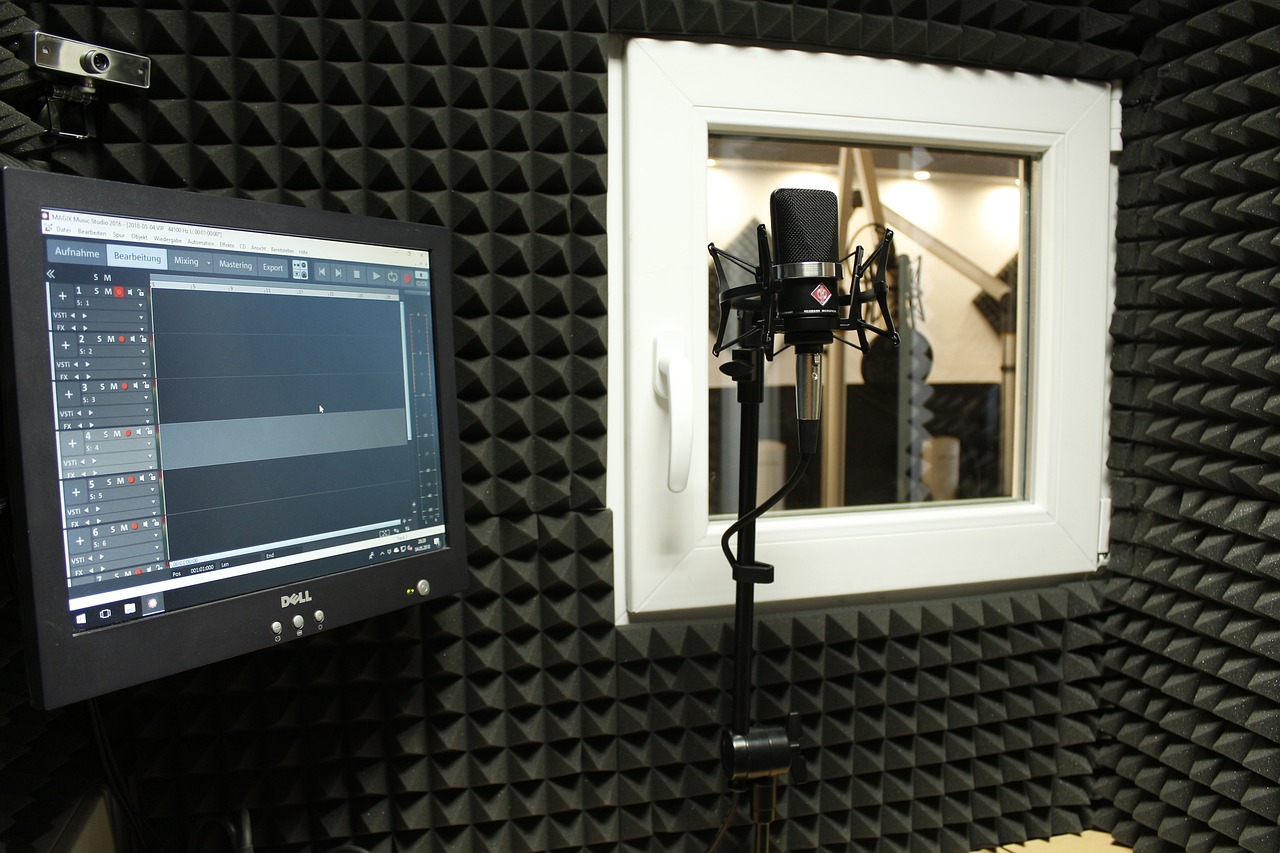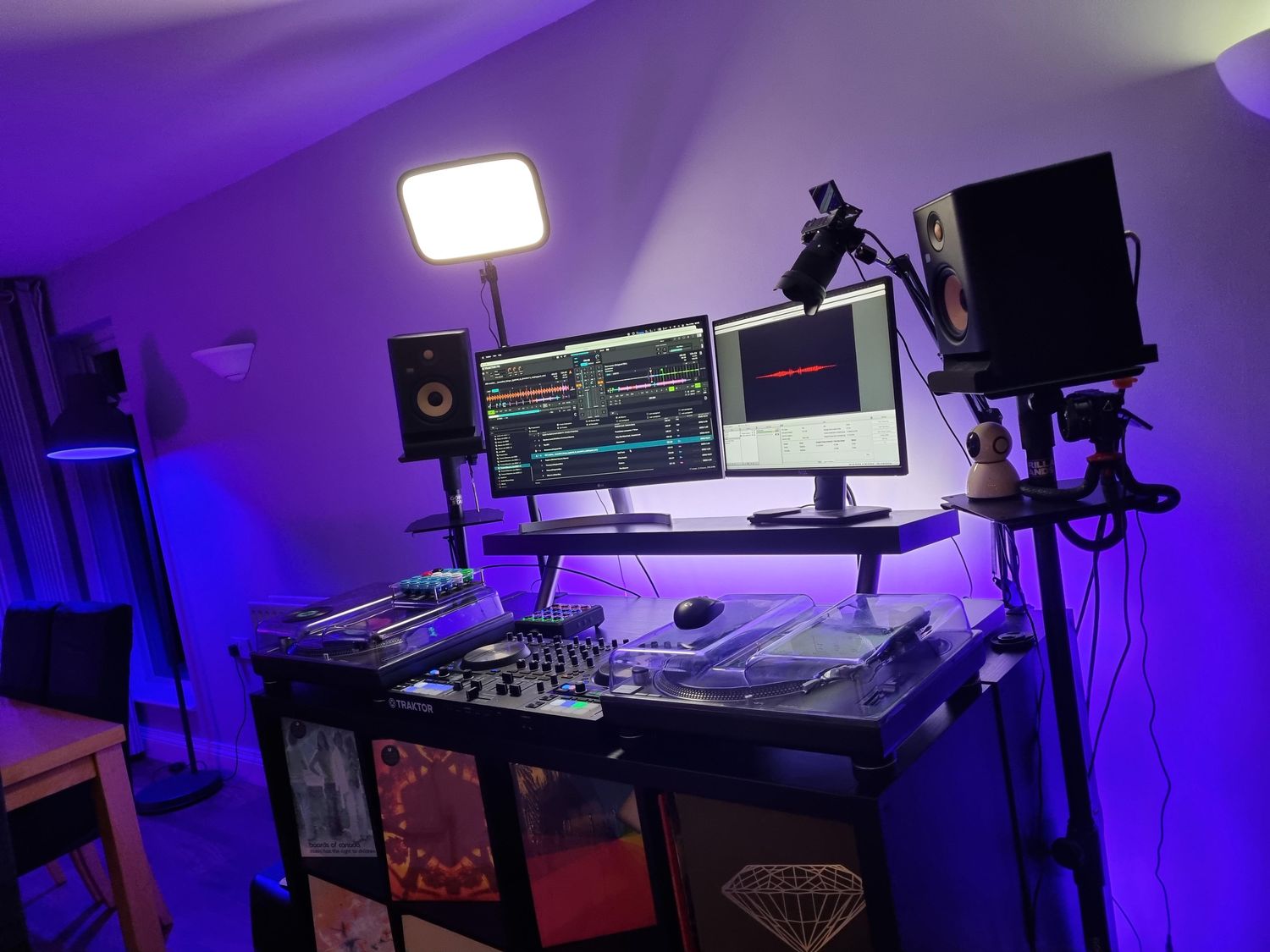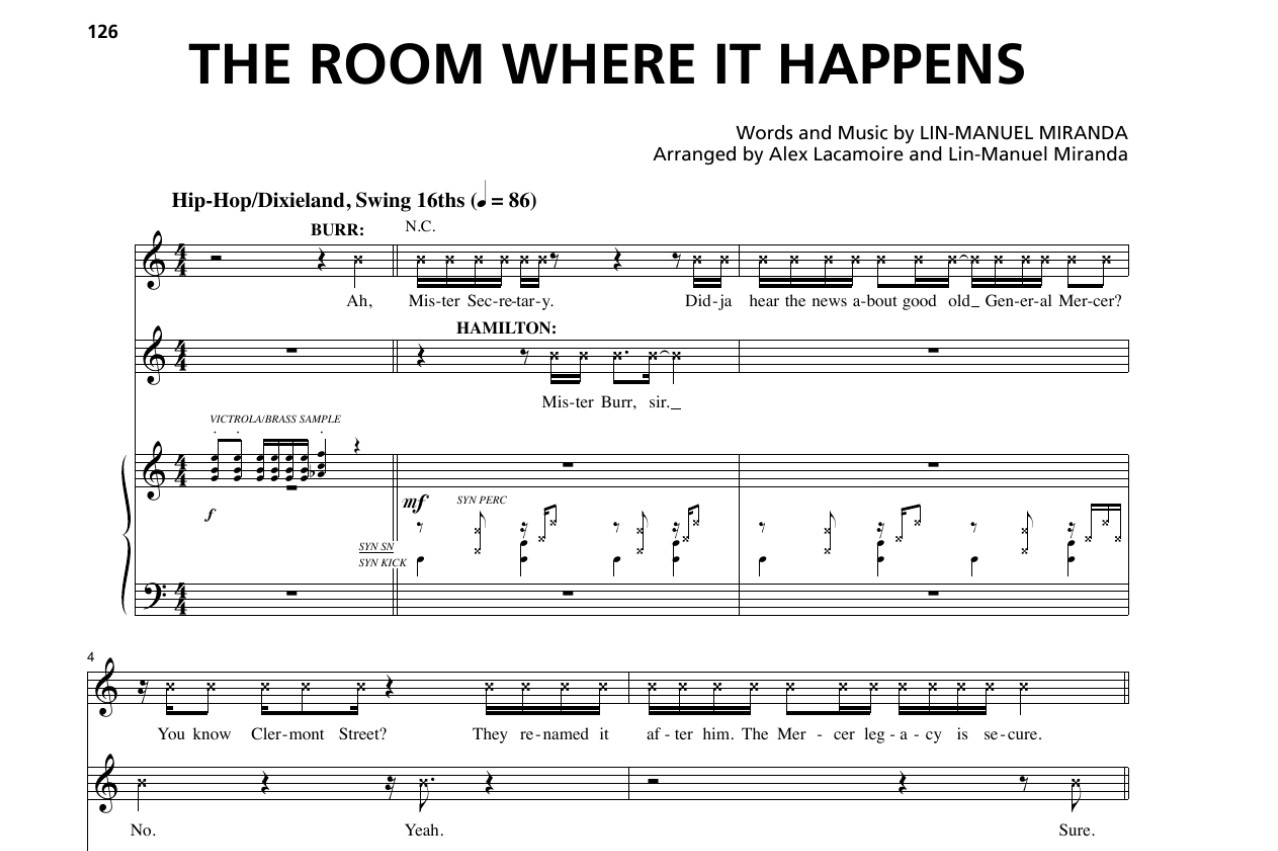Home>Devices & Equipment>Subwoofer>How To Hide A Subwoofer In Living Room


Subwoofer
How To Hide A Subwoofer In Living Room
Modified: February 17, 2024
Learn how to cleverly hide your subwoofer in your living room for a seamless audio experience. Discover innovative ways to keep your entertainment area clutter-free and stylish with our expert tips and tricks.
(Many of the links in this article redirect to a specific reviewed product. Your purchase of these products through affiliate links helps to generate commission for AudioLover.com, at no extra cost. Learn more)
Table of Contents
Introduction
A subwoofer is an essential component in a home audio system, adding depth and richness to the sound by reproducing low-frequency sounds. However, when it comes to integrating a subwoofer into your living room, the challenge lies in finding a way to hide it without compromising its performance. A bulky subwoofer can disrupt the aesthetics of your carefully designed space, but fortunately, there are several clever ways to conceal it.
Before diving into the various hiding options, it’s vital to consider a few factors when deciding on the placement of your subwoofer. The placement will impact the audio performance, as bass frequencies are omnidirectional, meaning they radiate in all directions from the subwoofer. Ideally, you want to achieve a balanced and immersive sound experience throughout the room.
Furniture integration is one common method of hiding a subwoofer. By incorporating it into your existing furniture setup, you can seamlessly blend it into the room’s decor. Another option is to utilize hidden storage solutions, such as cabinets or shelves, to discreetly house the subwoofer while still maintaining easy access.
If you are feeling handy, you could consider building a DIY subwoofer enclosure. This allows you to customize the design and dimensions to fit your specific needs while hiding the subwoofer in plain sight. Additionally, incorporating decorative elements such as curtains, room dividers, or acoustic panels can help camouflage the subwoofer and make it less noticeable.
While hiding the subwoofer is important, it’s equally crucial to ensure optimal sound performance. Placement, room acoustics, and calibration play vital roles in maximizing the potential of your subwoofer. Making small adjustments like experimenting with positioning and using sound optimization tools can greatly enhance the audio quality.
In this article, we will explore various strategies and techniques to effectively hide a subwoofer in your living room. Whether you opt for furniture integration, hidden storage solutions, DIY enclosures, or decorative elements, you can find a method that suits your space and personal style. Additionally, we will provide tips on optimizing the sound for the best audio experience possible. Let’s dive in and discover the art of concealing subwoofers with style and finesse.
Subwoofer Placement Considerations
Proper subwoofer placement is crucial for achieving optimal sound quality and ensuring a balanced listening experience. Here are some key factors to consider when deciding where to place your subwoofer in your living room:
- Room Size and Layout: The size and shape of your room will play a significant role in subwoofer placement. Larger rooms may require multiple subwoofers or strategic placement to distribute bass evenly. You should also consider the layout of the room in terms of furniture placement and potential obstructions.
- Listening Position: The subwoofer’s location relative to your primary listening position is crucial for achieving the best sound experience. Ideally, the subwoofer should be placed near the front of the room, preferably closer to the main speakers, to create a cohesive soundstage.
- Corner Placement: Placing the subwoofer in a corner of the room can often yield the strongest bass response. This is due to the reinforcement effect that occurs when sound waves reflect off the walls. However, corner placement can also result in excessive bass buildup, so it’s important to experiment and fine-tune the position to find the perfect balance.
- Distance from Walls and Furniture: Keep in mind that subwoofers produce low-frequency sound waves that can interact with nearby walls and furniture. To minimize any resonances or vibrations, it’s recommended to leave some distance between the subwoofer and surrounding surfaces. Additionally, consider using isolation pads or stands to further reduce vibrations.
- Crossover and Phase Settings: Most subwoofers have adjustable crossover and phase settings. The crossover determines the frequencies that the subwoofer reproduces, while the phase adjustment can help align the subwoofer’s sound with the main speakers. Experimenting with these settings can fine-tune the integration and ensure a seamless audio transition.
- Room Acoustics: The acoustics of your room also impact subwoofer placement. Hard surfaces like bare walls and floors can result in excessive reflections and standing waves, affecting the overall sound quality. Consider using acoustic treatment, such as bass traps and diffusers, to control unwanted resonances and improve bass response.
Remember, the ideal subwoofer placement may vary depending on your specific room and personal preferences. It’s worth experimenting with different positions and listening tests to find the placement that delivers the best bass performance and integration with your existing audio setup. Taking the time to properly position your subwoofer will greatly enhance your overall listening experience.
Furniture Integration Options
One of the most popular ways to hide a subwoofer in your living room is by integrating it seamlessly into your existing furniture setup. This method allows you to camouflage the subwoofer and maintain the aesthetics of your space. Here are a few furniture integration options to consider:
- TV Stand or Entertainment Unit: Many modern TV stands or entertainment units come with built-in compartments or shelves specifically designed to accommodate audio equipment, including subwoofers. Look for units with adjustable shelves or open back panels to ensure proper ventilation for your subwoofer.
- Bookshelf or Tower Speakers: If you already have bookshelf or tower speakers in your living room, consider placing the subwoofer alongside them. This will help blend the subwoofer into the speaker setup and create a cohesive look. Just ensure that the subwoofer is not obstructed by other objects and has enough space to breathe.
- Coffee Table with Hidden Compartment: Some coffee tables come with clever hidden compartments where you can discreetly place the subwoofer. These hidden compartments are often large enough to accommodate a subwoofer and can be accessed easily by lifting the top or sliding a panel.
- Console Table or Sideboard: Utilize a console table or sideboard with open shelving to house the subwoofer. By placing the subwoofer on a lower shelf, you can keep it hidden while still allowing for proper sound dispersion.
- Custom-Built Cabinet: If you have the budget and desire for a seamless integration, consider having a custom-built cabinet that is specifically designed to house your subwoofer. This option offers complete customization in terms of size, design, and material, ensuring a perfect fit for your living room decor.
When integrating a subwoofer into your furniture, make sure to consider proper ventilation to prevent overheating. Additionally, check for any potential vibrations that might occur when placing the subwoofer on a surface, as this can affect the sound quality. If necessary, use isolation pads or stands to minimize vibrations.
Furniture integration is an excellent option for hiding a subwoofer while maintaining a cohesive and visually appealing living room. Explore the various furniture options available and choose one that suits your style and meets your audio needs.
Hidden Storage Solutions
If you prefer a more discrete option for hiding your subwoofer, hidden storage solutions can be an excellent choice. These solutions not only help conceal the subwoofer but also provide easy access for adjustments and maintenance. Here are a few hidden storage ideas to consider:
- Cabinets or Shelving Units: Consider using cabinets or shelving units with doors or sliding panels to hide the subwoofer. You can place the subwoofer inside the cabinet or on a lower shelf, ensuring proper ventilation and minimizing vibrations. Some cabinets even have built-in cable management systems, allowing for a clean and organized setup.
- Floating Wall Shelves: Floating shelves mounted on the wall offer a sleek and minimalistic look while providing a hiding spot for your subwoofer. These shelves can be installed at a suitable height, allowing the subwoofer to be concealed while still maintaining easy access for adjustments or maintenance.
- Multifunctional Furniture: Opt for multifunctional furniture pieces that serve a dual purpose. For example, a storage ottoman or bench can house the subwoofer while providing additional seating or storage space. Similarly, a media console with hidden compartments can discreetly hide the subwoofer while functioning as a stylish piece of furniture.
- Hinged or Sliding Panels: Install hinged or sliding panels on the wall or within furniture units to create hidden compartments for the subwoofer. These panels can be seamlessly integrated into the room’s design and easily opened or closed whenever access to the subwoofer is needed.
- False Walls or Ceilings: For a more advanced and integrated approach, you can construct false walls or ceilings to conceal the subwoofer. This option may require professional installation and customization to ensure proper ventilation and sound dispersion.
When opting for hidden storage solutions, keep in mind the size and dimensions of your subwoofer. Ensure that the selected storage solution has enough space to accommodate the subwoofer without compromising its performance. Also, consider the accessibility and ease of maintenance, as you will need to access the subwoofer for adjustments or servicing.
With hidden storage solutions, you can maintain a clutter-free and visually pleasing living room while keeping your subwoofer out of sight. Explore the different options available and choose the one that best suits your needs and blends seamlessly with your existing decor.
DIY Subwoofer Enclosures
If you enjoy DIY projects and want to have full control over the design and customization of your subwoofer hiding solution, building a DIY subwoofer enclosure can be a rewarding option. With the right tools and materials, you can create a custom enclosure that not only disguises the subwoofer but also enhances its performance. Here are some steps to consider when building a DIY subwoofer enclosure:
- Measurements and Planning: Start by measuring the dimensions of your subwoofer and determining the size of the enclosure you want to build. Consider the available space in your living room and any specific design requirements you have in mind.
- Materials and Tools: Gather the necessary materials for your enclosure, such as sturdy wooden boards, screws, nails, and acoustic foam. You will also need tools like a saw, drill, and sandpaper to cut and shape the materials.
- Design and Construction: Decide on the design and appearance of your enclosure. It can be a simple rectangular box or a more elaborate design that matches your living room decor. Cut the wooden boards according to your measurements and assemble the enclosure using screws or nails. Ensure that the enclosure is sturdy and well-sealed to prevent any sound leakage.
- Internal Treatment: To improve sound quality and reduce vibrations, consider lining the interior of the enclosure with acoustic foam or damping material. This will help absorb unwanted reflections and create a cleaner bass response.
- Ventilation and Wiring: Ensure proper ventilation by adding ventilation holes or slots in the enclosure. This will prevent overheating and allow for proper airflow. Also, make sure to plan for cable management by adding openings or channels for the subwoofer’s power and audio cables.
- Finishing Touches: Sand and paint the exterior of the enclosure to match your desired look and feel. Consider using furniture-grade paint, veneer, or other finishing materials to create a polished appearance that seamlessly blends with your living room decor.
Building a DIY subwoofer enclosure requires time, effort, and some woodworking skills. Make sure to follow proper safety precautions and seek guidance if needed. With a well-constructed enclosure, you can hide the subwoofer while adding a unique and personalized touch to your living room.
Remember, the success of your DIY subwoofer enclosure depends on careful planning, accurate measurements, and attention to detail. Take your time, be patient, and enjoy the process of creating a custom hiding solution that perfectly fits your living room.
Concealing with Decorative Elements
Another creative way to hide a subwoofer in your living room is by incorporating decorative elements that camouflage its presence. By strategically placing decorative items, you can divert attention away from the subwoofer and create a visually pleasing atmosphere. Here are some ideas for concealing a subwoofer with decorative elements:
- Curtains and Drapes: Hang long curtains or drapes around the area where the subwoofer is located. This not only adds a touch of elegance to your living room but also helps to obscure the subwoofer from view. Choose curtains that complement your existing decor and adjust their positioning to effectively hide the subwoofer while still allowing for proper sound dispersion.
- Room Dividers: Place decorative room dividers strategically to create a visual barrier that hides the subwoofer. This can be particularly effective if the subwoofer is located in a corner or against a wall. Choose room dividers with patterns, textures, or materials that blend well with your living room decor.
- Plant and Flower Arrangements: Use tall potted plants or flower arrangements to create a natural camouflage for the subwoofer. Position the plants around the subwoofer, making sure they are not obstructing the sound output. This not only hides the subwoofer but also brings a refreshing and vibrant feel to the room.
- Artwork and Wall Decor: Hang eye-catching artwork or wall decor strategically to draw attention away from the subwoofer. You can place decorative pieces such as paintings, wall clocks, or mirrors around the subwoofer to divert focus elsewhere. Opt for artwork that complements the room’s color palette and style.
- Acoustic Panels: Incorporate decorative acoustic panels that serve a dual purpose. These panels not only enhance the room’s acoustics but also conceal the subwoofer. Choose panels with appealing designs or patterns that blend seamlessly with your living room decor.
- Decorative Furniture: Place other visually interesting furniture pieces, such as an accent chair, a floor lamp, or a stylish side table, near the subwoofer. These decorative elements will help divert attention and create a cohesive look in your living room.
When using decorative elements to conceal the subwoofer, ensure that they do not obstruct the subwoofer’s sound output or ventilation. It’s important to strike a balance between aesthetic appeal and maintaining the performance of the subwoofer.
By incorporating decorative elements strategically, you can effectively hide the subwoofer while adding style and charm to your living room. Experiment with different decorative items and placements to find a combination that achieves the desired visual effect while still ensuring optimal sound quality.
Sound Optimization Tips
While hiding the subwoofer is important for maintaining aesthetics, it’s equally crucial to optimize the sound for the best audio experience possible. Here are some tips to help you achieve optimal sound performance with your concealed subwoofer:
- Experiment with Placement: Even with a hidden subwoofer, try different placement options within the hiding spot to find the best position. Move it around the room and listen for any changes in bass response. Fine-tuning the placement can greatly impact the overall sound quality.
- Calibrate Crossover and Phase Settings: Use the settings on your subwoofer or audio receiver to adjust the crossover frequency and phase alignment. The crossover setting determines the frequency range the subwoofer handles, while the phase adjustment helps align the subwoofer’s sound with the main speakers for seamless integration.
- Room Acoustics: Pay attention to the acoustics of your room and consider using acoustic treatment to improve sound quality. Bass traps, acoustic panels, and diffusers can help control unwanted resonances and reflections, resulting in a cleaner and more balanced bass response.
- Use Digital Room Correction: Consider using digital room correction tools or equalizers to optimize the sound output of your subwoofer. These tools analyze the room’s acoustics and apply corrections to ensure accurate and balanced sound reproduction.
- Experiment with Subwoofer Settings: Most subwoofers have adjustable settings, such as volume, phase, and equalization. Experiment with these settings to find the best balance that suits your listening preferences and room characteristics.
- Use a Sound Meter: Consider using a sound meter or calibration microphone to measure the sound levels and frequencies in your room. This can help you identify any problematic areas and make necessary adjustments to achieve a more even sound distribution.
- Optimize Speaker Placement: Ensure that your main speakers are optimally positioned in the room. Proper speaker placement can greatly enhance the overall sound quality and integration with the subwoofer.
- Regular Maintenance: Don’t forget to regularly clean and inspect the subwoofer to ensure it remains in good working condition. Dust or debris buildup can affect the performance, so make sure to clean the grill and vents periodically.
By following these sound optimization tips, you can make the most out of your hidden subwoofer and enjoy a well-balanced and immersive audio experience in your living room. Experiment with different settings, placements, and room adjustments to find the sweet spot that suits your personal preferences and room acoustics.
Conclusion
Hiding a subwoofer in your living room doesn’t mean sacrificing audio performance or compromising on aesthetics. With the various options and strategies discussed in this article, you can successfully conceal your subwoofer while maintaining a visually pleasing and immersive audio experience.
Whether you choose to integrate the subwoofer into your existing furniture, utilize hidden storage solutions, build a DIY enclosure, or incorporate decorative elements, there is a method to suit your style and space. Remember to consider factors like room size, layout, and acoustics when deciding on the placement of your subwoofer. Fine-tune its position, experiment with crossover and phase settings, and optimize the room’s acoustics to achieve the best sound quality possible.
Additionally, regular maintenance and cleaning of your concealed subwoofer will ensure continued performance and longevity. Keep an eye on dust buildup, inspect cables and connections, and make any necessary adjustments to optimize its functionality.
Ultimately, the goal is to seamlessly integrate your subwoofer into your living room without drawing attention to its presence. By following the tips and techniques outlined in this article, you can enjoy the deep, rich bass that a subwoofer provides while maintaining the aesthetics and flow of your living space.
So let your creativity guide you as you embark on the journey of hiding your subwoofer with style and finesse. With the right approach and a little bit of ingenuity, you can achieve a harmonious balance between audio excellence and a visually stunning living room.











